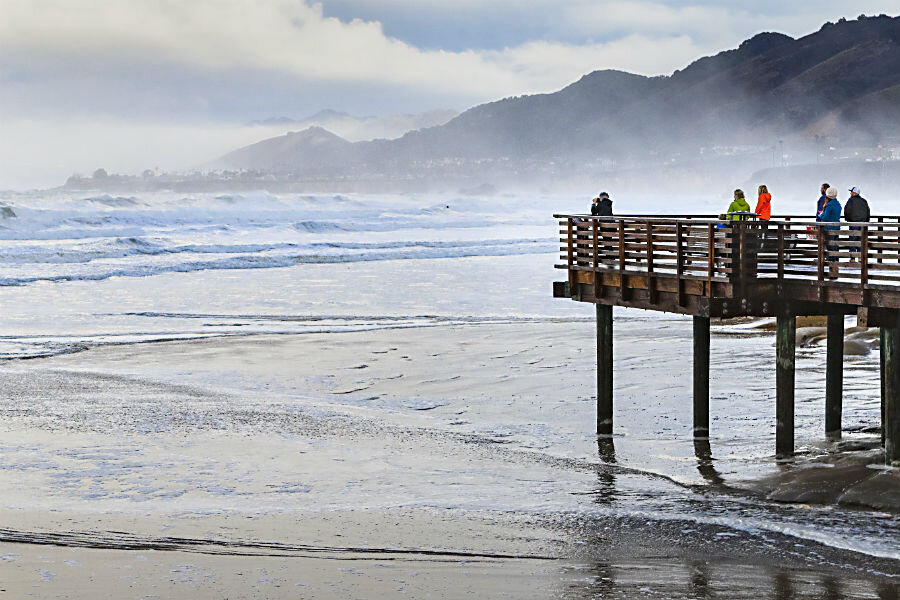How tidal tugs trigger tiny earthquakes on San Andreas fault
Loading...
Researchers from the US Geological Survey (USGS) have linked seismic activity along California’s San Andreas fault to gravitational pull from the sun and moon.
Small underground tremors called low-frequency earthquakes (LFEs) are triggered by tidal forces, according to the study, which was published Monday in the Proceedings of the National Academy of Sciences. Data from the subterranean depths of the San Andreas fault could provide new insights into fault behavior, researchers say.
“The stress that gets built up to produce earthquakes comes from the deeper plate tectonic processes,” says lead author and USGS researcher Nicholas van der Elst in a phone interview with The Christian Science Monitor. “So this is where that spring is getting loaded.”
Ocean tides, which are caused by gravitational force from the sun and moon, are affected by the position of those celestial bodies. During times of syzygy – where the sun and moon form a straight line with Earth in the center – tidal pull is the strongest on both sides. When the sun and moon are 90 degrees apart, the tides are at their weakest.
But tides don’t just pull the oceans. Strong tides also stretch the Earth’s crust, although the effect is a lot subtler. The notion that tidal activity could cause earthquakes existed for hundreds of years before falling out of vogue in the 20th century.
But in recent years, the theory seems to have gained new traction. In 2004, UCLA researchers reported a correlation between tidal stress and earthquake strikes. Last year, Greek seismologists reached similar conclusions while studying earthquakes in the Hellenic arc.
In this most recent study, USGS scientists combed through archival data from over 80,000 LFEs along one stretch of the 800-mile San Andreas fault. They found that seismic activity synced up with phases of the “fortnightly tide.”
“Looking at how these LFEs correlate with the daily tides already tells us one thing about the fault strength,” van der Elst says. “The fault has to be very weak down there.”
Most earthquakes occurred during the waxing phase, rather than the peak of the fortnightly tidal cycle. And tremors were most likely to occur on days when the tide was much stronger than it was on the previous day.
“The reason we looked at the fortnightly triggering components was that we wanted to get an estimate not just of the strength, but how fast it takes those fault patches to recharge after low-frequency earthquakes,” van der Elst says. “So we now know the strength down there, as well as a way to estimate the actual rate of accumulation of stress on LFE patches. Both of those things together gives us an idea about the fault’s ‘earthquake budget.’”
It’s unclear whether or not low-frequency earthquakes could be used to predict aboveground earthquakes. But they could be used as instruments in a “natural lab,” van der Elst says.
The San Andreas fault reaches as much as 20 miles underground at its deepest, making it virtually impossible to study directly. But low-frequency earthquakes can be a proxy for understanding fault behavior from the ground up.
For example, these tremors can help track the movement of the deep fault, which is in a nearly constant state of motion. Tiny fault slips can transfer stress to the shallow part of the fault, where earthquakes are felt.
“It's almost like having a lot of little creep meters embedded in the fault,” co-author and USGS seismologist David Shelly told the Los Angeles Times. “We can use these low-frequency earthquakes as measurements of, at least in a relative sense, how much slip is happening at each little spot on the deep part of the fault where we see these events. When we don’t see them, we don’t know what’s happening; we don’t know whether it’s slipping silently or not slipping at all.”








